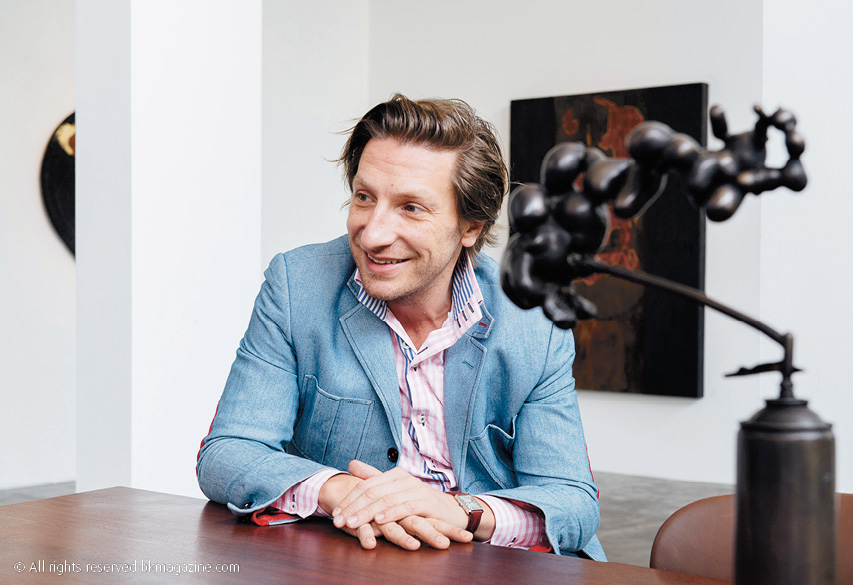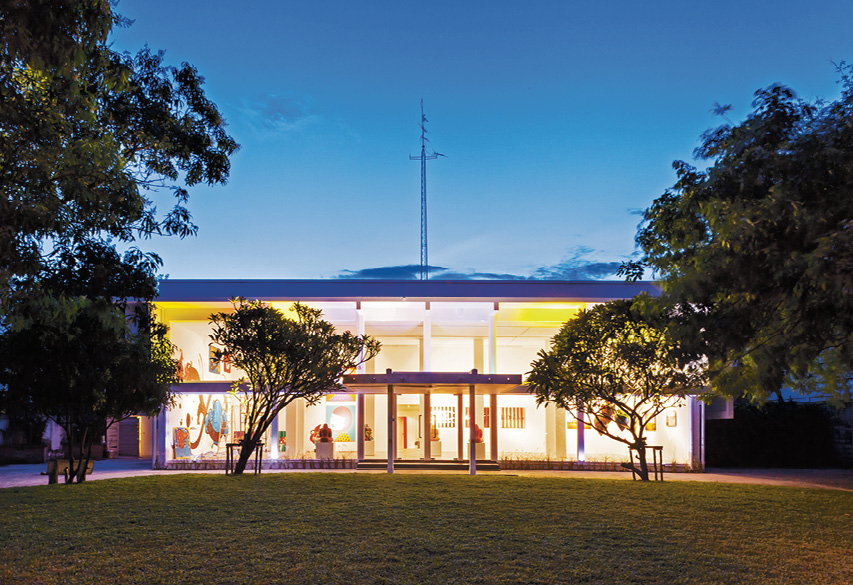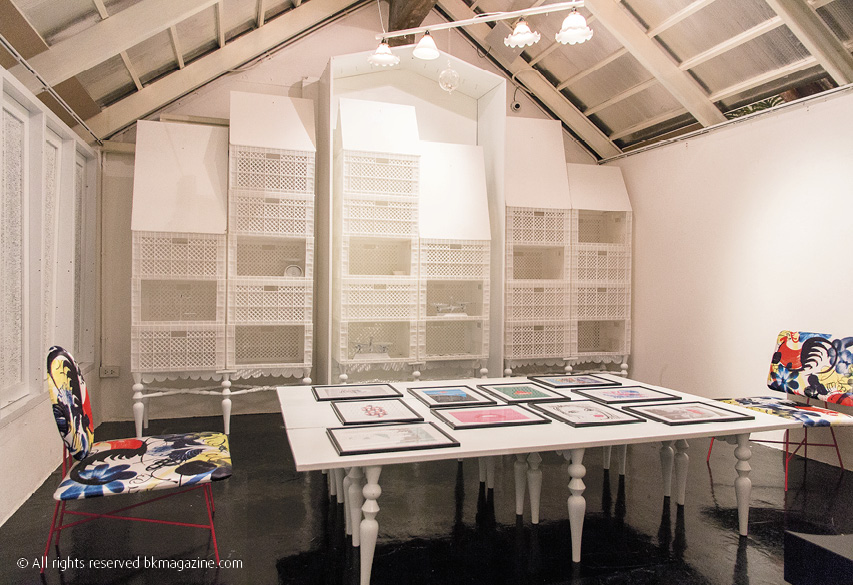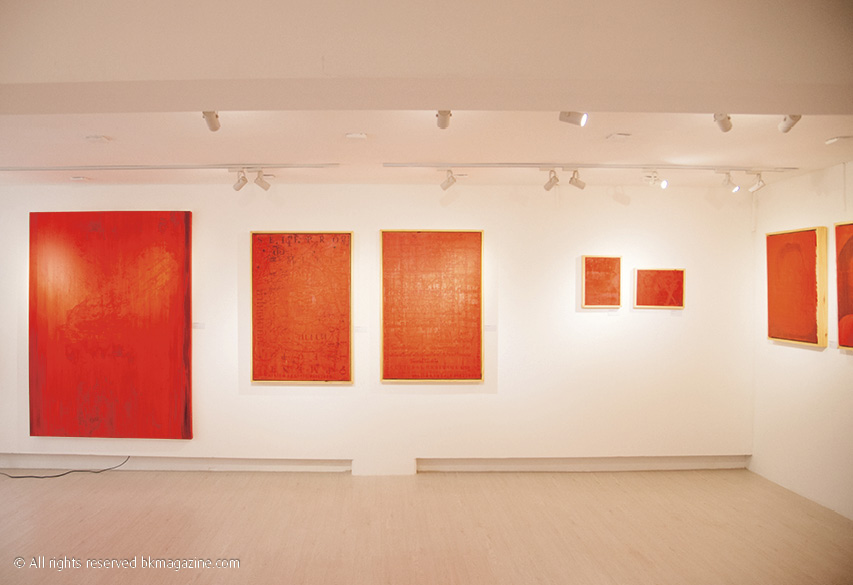

The much-hyped white-cube art space that emerged in Sathorn Soi 1 back in early September had the young art crowd frothing with its debut exhibition by the famed cartoonist Wisut Ponnimit, titled Melo House. The multi-purpose, 200-square-meter main space is designed to facilitate all forms of contemporary art, while the smaller space next door is used for more relaxed events, and as a reading room and gift shop.
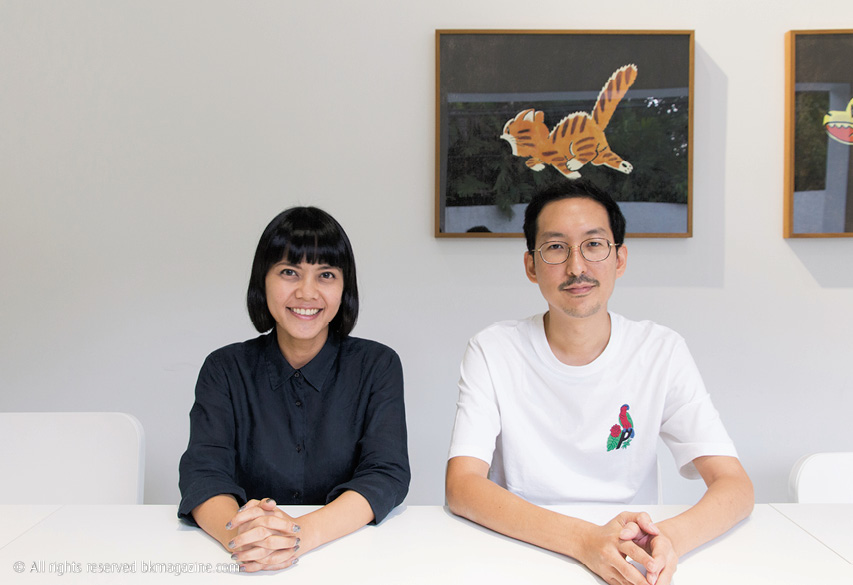
Op Sudasna and Supamas Phahulo, gallery owners
How did the space come about?
Supamas: It’s a personal, self-funded project that we built from scratch. We wanted to create a space that works for the specific types of exhibitions we want to see ourselves.
What’s so unique about your space?
Op: The presentation of the work is paramount. We take great care making sure that the art is always the first priority. For instance, the main exhibition room can be adapted for different purposes—big sculptures, fashion shows, live experimental performances—you name it. The ceiling can be opened up to provide natural light from outside—that’ll be for our next show—and the walls can easily be broken down to make way for all sorts of other contemporary art. Sure, it’s a commercial space and it’d be great to attract collectors for the sake of longevity, but it’s the content that matters to us; everything else is just a by-product.
Who is your target audience?
Op: We have all sorts of visitors, from artists and architects, to people that have probably never been to an art space before. We’ve been able to reach out to a really big crowd, and we want to continue to do that. In fact, the name comes from rap songs about representing a ‘hood, a city where you come from. In a way, we’re trying to represent Bangkok city.
Do you think there’s been a growth of interest in the local art scene?
Supamas: The main problem is probably communication and education. A lot of people don’t even know that these art spaces exist. But we think younger people will want to visit us. It’s a learning process just like anything else. If people of our generation—and the younger generation—realize that they don’t have to just hang out at the malls, then things will slowly move in the right direction.
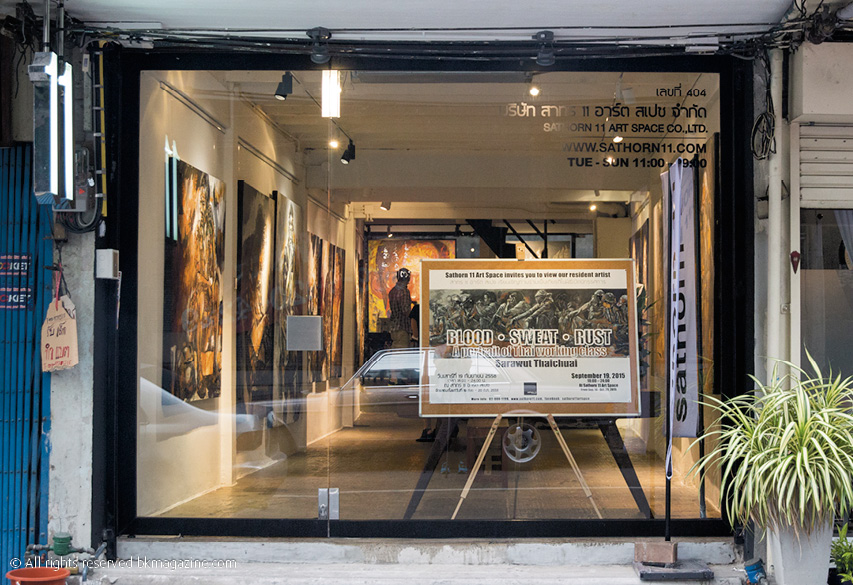
Emerging in an unlikely residential alley of Sathorn Soi 11, the new gallery is a two-story space that provides an outlet for the work of aspiring local artists as well as a residency program. They’ve got four atelier studios above the gallery, which are lent to Thai artists selected from across the country.
Marc Green, co-owner, and Mike”Boonmahanark, co-owner and curator
How did the space come about?
Marc: This entire project was self-funded by me and Mike, who also finds artists and curates exhibitions here. It wasn’t easy, but the project was born from my belief that Thai artists should become more recognized, and this platform may perhaps even help them grow internationally.
How do you position yourself as a gallery?
Mike: We see ourselves as a social enterprise. The purpose of the gallery is to give Thai talents from across the country a platform to display their work, and also to support them through the supply of art equipment, a studio and lodgings. My initial inspiration was to make lives better for these amazing talents. So we’re looking to have one event a month, featuring rotating exhibitions by our resident artists.
What type of art is the gallery going to be focusing on?
Marc: So many art spaces here bring in international artists. We’ll only be focusing on Thai contemporary art of all mediums and styles. Absolutely everyone and anyone can apply for our residency, which would last 3-6 months, and to do a show here. Over the last six months, we’ve received so many applications from students in Chiang Mai, Khon Kaen and Bangkok, wishing to join our space. It’s really great.
What problems do you see in the local art scene?
Marc: There’s clearly a disconnect between the Thai art community and the farang art community—you can tell by just looking at art openings. We’re really hoping to slowly change that and be the bridge for the two communities. There is more interest in art now in Bangkok, but it’s not as widespread as it could be. I’ve been here for over nine years and quite a lot has changed in terms of the contemporary art scene. In the last two years especially, if you just look around Yannawa, Charoenkrung and Chinatown, there’s a lot of new spaces that serve as a platform for all sorts of art.

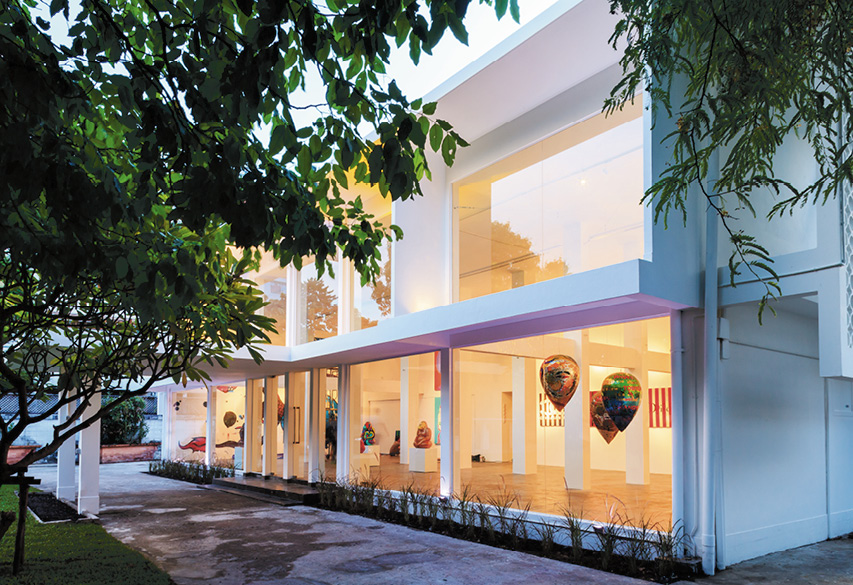
French nationals Frederic Meyer and Jeremy Opitresco (the two gentlemen behind Namsaah Bottling Trust) created one of the most striking galleries in town when they opened this huge white space in mid-2015. Nestled on Yen Akart Road in Sathorn, the multi-purpose, by-appointment-only gallery takes influence from the work of 1930s European architecture with its striking modernist building, soaring ceilings, expansive glass and crisp white facade, while out front there’s also a 600-square-meter sculpture garden.
Jeremy Opritesco, founding partner
Do you notice a big difference between the art scene here and elsewhere you’ve visited?
Personally, I find that when an art scene is established, it’s a lot less interesting. There are no newcomers, no new artists and the energy is very different. It’s hard to come up with a new concept and new ideas. There’s a lot of interest in Asia now. There was hardly anything in China a few years back, and now it’s one of the biggest markets in the world. With Bangkok you can really feel the boom arriving.
Do you see any problems that Bangkok’s art scene still needs to overcome?
The collectors are currently going to artists directly and artists have been sending their work to collectors for years now. The main challenge is getting collectors and buyers to trust a gallery and know that if they purchase through us, there’ll be more value in what they do over time. At the moment, no one’s taking care of the artists, to help them go out, go to art fairs and get exposure. Quite a lot of artists, once their art is sold to this niche group of Thai collectors, just stop working. Galleries can really help the Bangkok art scene take off. I think this is the real motivation behind the space.
Who is your audience?
There are a lot of international buyers, locals, expats and even tourists from around Southeast Asia. I wouldn’t say there’s a lack of interest, but perhaps the issue is that many are from the same crowd. We want to break into fashion and design to broaden our audience.
Future plans for the gallery?
We’re working on an artist’s loft in the back. I think it’s very important for the artist to stay here for a few months to get inspiration, to discuss the work. We’re going to have a new exhibition every six weeks, and we’ll try to integrate a food concept—we have a full professional kitchen at the back. I’ve been talking to artists and designers here, and they feel like there should be a lifestyle component to it; putting gastronomy and art together. We’re collaborating with hotels and luxury brands, too. That’s another indication that the art scene is evolving.

This design studio dedicated to forward-thinking furniture and product design opened a small private upstairs gallery back in May. The 48-sq-meter space features work by local and international artists who are chosen to reflect the owners' belief that graphic prints, textiles and furniture deserve to be admired with the same reverence as fine art.
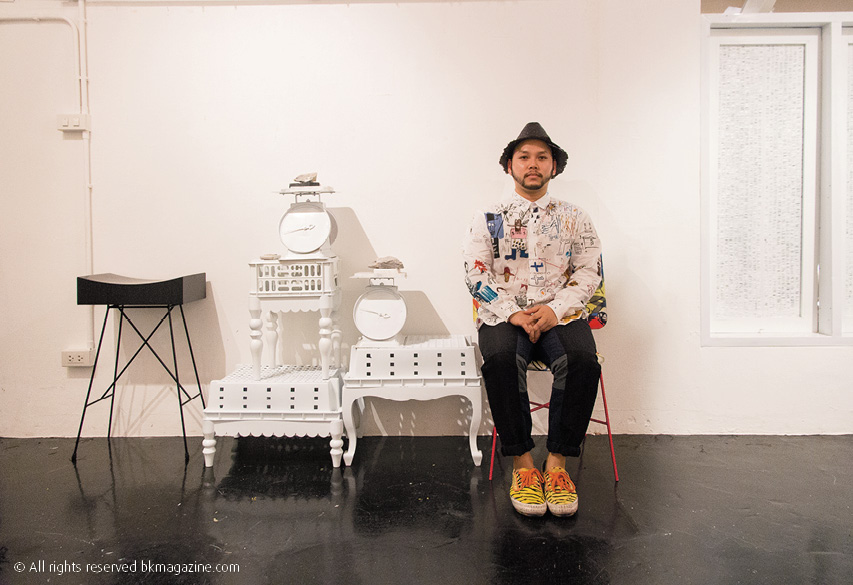
Saran Yen Panya, designer and gallery owner
How have you seen Bangkok’s art scene change in the past few years?
There’s been quite a decline in huge trade shows and exhibitions, and more momentum towards small, self-run art spaces. And I’d say, the more the better. Even the bars-slash-galleries—they’re great. Drinking and admiring art at the same time is a wonderful combination. That’s why I love spaces like Speedy Grandma—I feel welcome every time I head over there.
Who is the Bangkok audience?
I want nothing more than to expand the audience base and promote everyday art for everyday aunties and salarymen in Bangkok. I don’t think art should be limited to just an exclusive crowd—some of the stuff we’ve brought over has sold to the regular joe, and that’s because it’s beautiful and affordable. Collecting art doesn’t have to be about high-end, massive art pieces. It doesn’t have to be too “arty” all the time.
What’s the defining character of the gallery?
Our gallery focuses on objects, furniture and design products, as well as contemporary art. We’ve been holding one exhibition a month, from artists that have a massive fan-following to those who are so low-key they only have 200 Instagram followers. It’s a very casual space. Sure, it’s a private gallery but by having people call in for an appointment, it’s much easier to personalize each visit. It’s all about bringing over something unique, something that you won’t be able to find elsewhere. And it’s my home, so there’s a relaxed, cozy atmosphere.”
What’s been the biggest challenge so far?
One of the difficulties of holding an exhibition is conveying a story to the audience. I like promoting underdog artists. Many galleries pick mainstream, established artists for commercial purposes. That’s not our main aim. It’s also not very easy to bring in artists, whether well-established or not, because we’re still quite new. Of course, installing a completely new set of work takes a lot of time and effort, too.

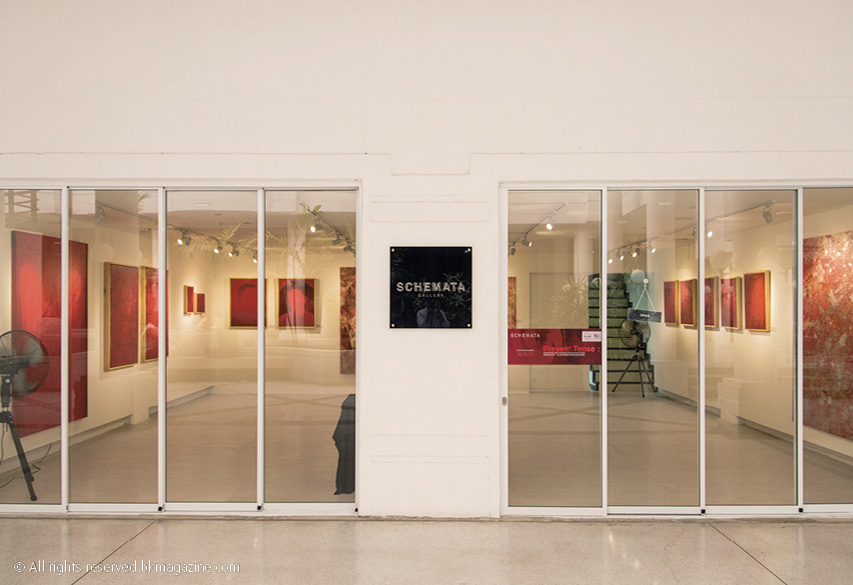
This one-room art space takes over a spot in the quiet Liberty Plaza at the end of Thonglor. Although run by Anon Pairot, one of Bangkok’s best known product designers, the gallery is by no means restricted to just design work. It opened strongly in July 2015 with an exhibition of formerly unseen sketches from landscape architect Pok Kobkongsanti (from Terrain + Open Space studio) and followed it up with a series of canvases created over 10 years by Chiang Mai artist Angkrit Ajchariyasophon.
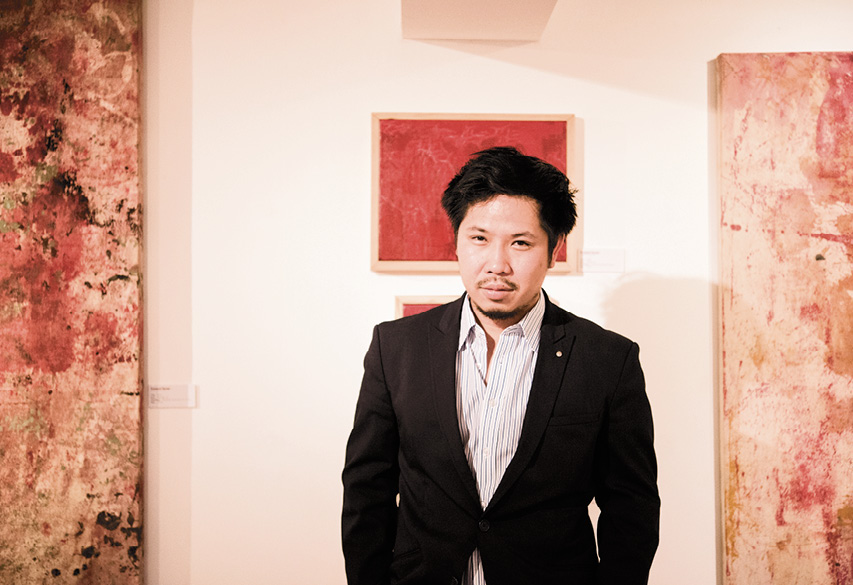
Anon Pairot, designer and gallery owner
Why did you decide to open this space?
I would like it to be a space to ponder over contemporary issues and new ideas. Design is still largely driven by capitalism. The more you create the more you earn. The more you mass-produce the more you gain. I could be investing in something else that generates more money faster than this, but this has a lot more value than commercial gains. I think the greatest contribution we can make as a gallery is to inspire and bring new perspectives to people.
Do you feel art appreciation is only for the elite here?
If you want to think purely in terms of economics, art probably only serves the rich. Would an auntie selling noodles on the street come to see or buy these things? There are probably other more pressing concerns in their lives. The differentiator is taste, education and perspective. One chooses to come to a gallery because they prioritize it over going to the movies or watching a lakorn. But I don’t think we should be trying to convince everyone to come to art galleries. When an audience decides to see a show, it’s content-specific, not gallery-specific; different sorts of artwork will attract different people.
What work are you interested in showing?
We care about the artists' thoughts and what they’re trying to criticize. The format can basically be anything. The only limitation is the size of our space, really. Great art is created when artists believe in what they’re working on. If something is created purely for commercial purposes, then that’s just home decor. In the future, there’ll be designers, architects, performing artists so on and so forth, depending on their confidence with our space. The main emphasis is on Southeast Asian artists because the culture here is so diverse, not as homogenous as Europe. There’s something quite exotic about us as a region.
Would you say that Bangkok is currently experiencing a newfound interest in art?
I have no idea. I’m not doing this because it’s on the up right now. But the good thing about all this is that there’s more to be explored and enjoyed in Bangkok, especially for visitors. Not just, you know, the alleys of Nana and Phrom Phong. One of the ways to explore a country is through the arts. It would be boring if every gallerist thought the same way, wanted the same things and liked the same shows.







